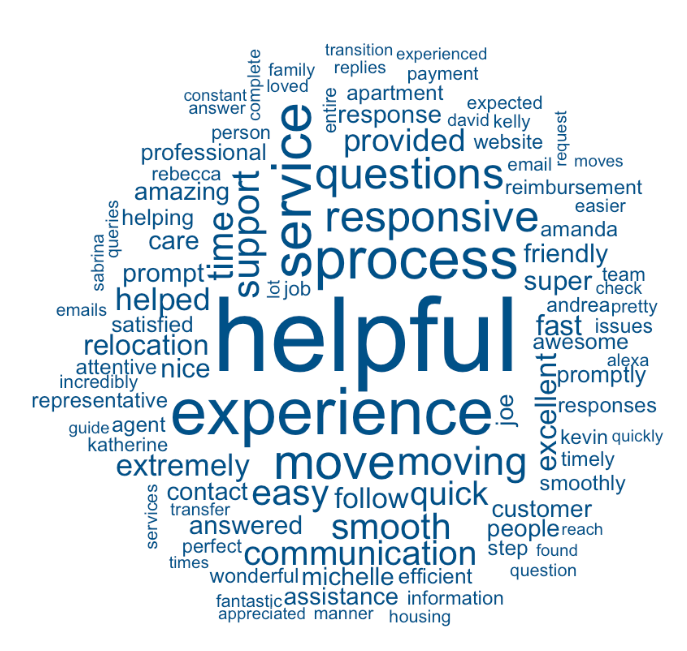
Developing an Optimal Hybrid Workforce Strategy: There’s No Silver Bullet
This article was co-written with our partners at Grant Thornton with significant contributions from Melissa Dimitri Managing Director, Strategy practice, Advisory Services (Melissa.Dimitri@us.gt.com).
If you haven’t heard the news, remote and hybrid work is here to stay. Even if the pandemic ended tomorrow (which is highly unlikely), after almost two years of working from home, many employees do not want to return to the pre-pandemic five days a week in the office and are willing to quit if forced to do so – a significant 40% of respondents according to Grant Thornton’s State of Work in America report. As large organizations start to go public with their workforce approaches, those that haven’t made long-term strategy decisions surrounding their workforce policy will soon need to do so. The result is many clients are asking us if we’re seeing a consensus when it comes to designing an optimal hybrid/remote workforce strategy. The only consensus is there is no consensus.
Workforce approaches we’re seeing in the marketplace
Before we jump into how to design and execute an optimal hybrid workforce strategy, it’s helpful context to examine the approaches we’re seeing in the marketplace to understand the range of options available and their prevalence (because after all, the competition for talent is intense).
Post-pandemic workforce policies have largely coalesced into three unsurprising categories: full in-person, fully remote, and hybrid.
Full in-person is typically adopted by smaller/regional firms, those whose jobs require them to be on-premise (e.g. manufacturing), or those with influential leaders that feel in-person is critical to success. They’re typically continuing to hire in local markets and relocating individuals to their office/HQ where required.
A fully remote approach is common for digital-first companies or companies that have already been utilizing remote workers or teams spread across locations and time zones prior to the pandemic. Regular business travel and short-term assignments may play an important role here for certain roles, team building, or important project work.
Hybrid workforces are most prevalent among our clients and business contacts. This approach attempts to take the best of both models and blend them together. Organizations adopting the hybrid approach may be location agnostic when it comes to hiring and staffing, willing to hire across dispersed markets. But they may also choose to relocate individuals when necessary for business objectives or allow individuals to choose relocation.
As for how organizations are selecting which model to adopt, so far there appear to be four main organizational mindsets that we see when it comes to determining workforce strategy.
Decisive - These organizations are taking a strong stance on workforce policy, whether that be 100% remote or 100% in-person, and don’t want to play in the gray area in between. Those organizations who choose 100% in-person tend to be more traditionally-minded and prefer a single model to quickly chart a path ahead and construct policies to drive employee compliance.
Highly reactive - These orgs are hyper-focused on what the employees want and/or what everyone else is doing. This can lead to organizational schizophrenia as policies shift and flip based on changing market conditions, the trajectory of the pandemic, and current employee sentiment.
Hesitant - These organizations are reluctant to announce big and/or permanent changes in policy. They choose the “wait and see” approach as the pandemic evolves.
Innovative - These organizations view this shift as an opportunity to improve efficiency and scale in a hybrid/remote world. They’re looking at the potential benefits of new workforce types including expanded talent pools, new opportunities to engage with employees and customers, and/or redefining definitions for employee efficiency and effectiveness.
Which workforce model is best?
Today, no model has emerged as better or more efficient than the rest. In fact, one can find examples of success and failure within each approach to workforce strategy. And while certain data has shown that employees can be just as, if not more productive while working from home, it’s unclear if that will persist long-term as employees move to different roles, projects, or companies.
Perhaps what’s most important to note is that all models can create churn – because every employee has a model preference and those preferences will almost certainly diverge across employee segments. This might be scary to hear during “the Great Resignation,” but there is no way to fully optimize for retention.
The best thing an organization can do is 1) be intentional and strategic with the design of your workforce model and 2) once a decision is made, roll it out in a thoughtful, employee-centric way.
How do you design an optimal remote/hybrid workforce model?
If, after considering the options, you feel a hybrid workforce strategy is the most compelling approach for your organization, there are three key factors that go into designing a successful hybrid workforce model.
- Know thyself. It’s important to consider your current and aspirational organizational culture. Will that culture be enabled or hindered by your workforce policy? For example, if you aspire to be an innovative, digital-first company, mandating that people come into the office five days a week may feel jarring and inauthentic to your employees.
- Know your business goals and metrics and consider how the workforce model will impact them. Efficiency, quality, customer experience and engagement, cost to serve, cybersecurity, innovation, employee training and development, etc. can all be impacted by your workforce approach. Too often organizations over-index on employee preference while losing sight of overall business objectives. Employees are the most important asset at an organization, but balance is the key here.
- Know who you’re solving for. Remember, it’s impossible to please all employees, so know which segments are most critical to organizational success. Consider how your policy will impact those employees and how to mitigate any negative impact or perceptions.
Rolling out your new workforce model - It’s all about execution
Implementing your new workforce policy will involve the whole gamut of your operating model: people, processes and technology. But there are a few key factors for implementing a successful remote / hybrid workforce model to keep in mind.
Be proactive with efforts to retain your employees. The current job market is incredibly hot so it’s safe to assume that just about everyone is a flight risk. Developing a good understanding of what motivates your key people will be essential to ensure your workforce model is aligned with those motivations. It’s also helpful to bake in some “sense and respond” capabilities into your plan so that if the model isn’t working how you expected, you can find out and adjust before people start leaving.
Ground your decisions in facts. There have been plenty of organizations in the headlines because they have a vociferous leader that mandates a certain policy that a significant portion of employees feels is unjustified. Take the time to really consider what is best for the organization and then make that clear during the implementation, but be sure to have facts to support that decision. For example, are you hesitant to go fully remote because of cybersecurity concerns? Provide incident reports showing that attacks and threats have increased while folks were working from home during the pandemic. Businesses need to own these facts and make sure they’re part of your communication strategy.
Ensure you have the right tools to execute your strategy. How do you intend to track who is approved to work remotely, where employees are actually working, and for how long? Do you have the systems in place to pay employees and withhold taxes in new locations? As your strategy is developed and deployed, where employees are working will have a significant impact on the amount of risk your organization takes on. You will need the right tools to monitor if employees are working where you think they are (or have been approved to work) and flag potential issues before they arrive.
Decide who owns this new type of employee category. Hybrid workforces have the potential to create a vast new population of mobile employees and with that comes new processes and concerns. Having a strategy in place for who will tend to the various new responsibilities that come with hybrid workforces is key. For example, who approves employees to work remotely in each location for a given amount of time, and is that approver the same person who ensures that the employee has returned after their time is up?
When it comes to hybrid workforces, there’s no putting the genie back in the bottle. For years people were talking about the “future of work,” but due to the Covid-19 pandemic it’s become clear that the future of work is here – and it is one with more remote and distributed workers. Making the shift to a hybrid workforce model won’t be easy for many organizations, but it is a necessary endeavor as employees look for more flexibility and are willing to move companies to get it. By following the guidance above, organizations can develop a workforce strategy that not only meets their needs and goals but also positions them to compete for talent successfully and conduct business in an agile and fluid manner.


